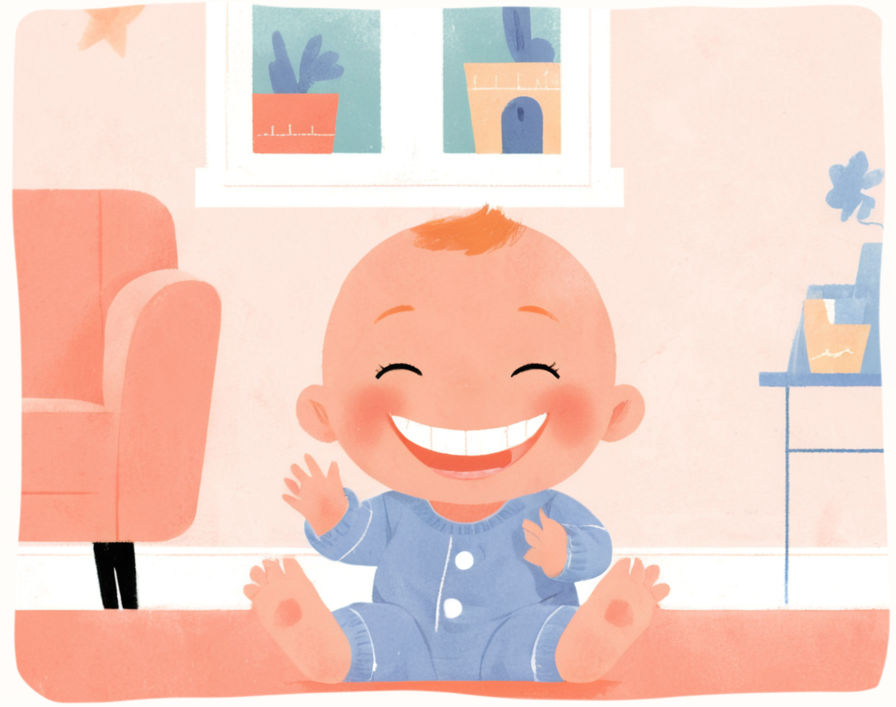Baby smiles aren’t all the same. Learn the difference between reflex, social, and intentional smiles, and what each says about your baby’s development.

There’s nothing like it: your baby’s tiny lips curl up, their eyes light up, and your heart melts… But what’s behind that smile? Is it gas? Happiness? Recognition?
The truth is, babies smile for different reasons at different stages, and every smile tells a story about their growing brain and connection with you.
- When it happens: Often in sleep or right after birth.
- Why: These early smiles are reflexive, part of the newborn’s nervous system maturing.
- What it means: They don’t signal emotion yet, but they’re still beautiful to witness (and a preview of what’s coming).
- When it happens: Baby smiles in response to your face, voice, or touch.
- Why: They’re beginning to recognize familiar people and enjoy interaction.
- What it means: This is when smiling becomes a connection. They’re saying, “I know you. I like you.”
- When it happens: Baby smiles to get your attention or share excitement (like seeing a toy).
- Why: They’ve learned that smiling makes you smile back, it’s the start of social communication.
- What it means: A two-way street: your baby is actively engaging with the world.
Smiles aren’t just cute, they’re developmental milestones. They show that your baby’s vision, social awareness, and emotional regulation are growing. Smiling also triggers feel-good hormones (oxytocin) in both you and your baby, strengthening your bond.
- Make eye contact: Babies love faces, especially yours!
- Talk and sing: Your voice is their favorite sound!
- Smile back (a lot): It reinforces that their actions have meaning.
- Play simple games: Peekaboo and gentle tickles are universal smile-makers.
Some babies flash social smiles at 6 weeks; others take closer to 8 or 9 weeks. Both are normal. Premature babies, for example, may smile later based on their adjusted age.
If you’re concerned your baby isn’t smiling by 3 months, especially if combined with lack of eye contact, check in with your pediatrician. But remember: one milestone doesn’t define the whole picture.
At Isiboo™, we celebrate these small moments. because they’re big in meaning. Our micro-learning quizzes help you understand why milestones like smiling happen, and how to support them with love and curiosity!

